“Doesn’t dagou (打狗) mean hit a dog?” I ask the vendor outside the British Consulate in Takow, Kaohsiung, on reviewing my ticket.
“That’s how we render Takow in Chinese,” she explains. “It’s based on an indigenous name.”
It turns out that until the establishment of Kaohsiung County in 1945, the Hoklo-Saraya designation Takow (sometimes rendered Takao or Takau) was how the southwest corner of Taiwan was known, and it remains a popular epithet used in branding local businesses and events.
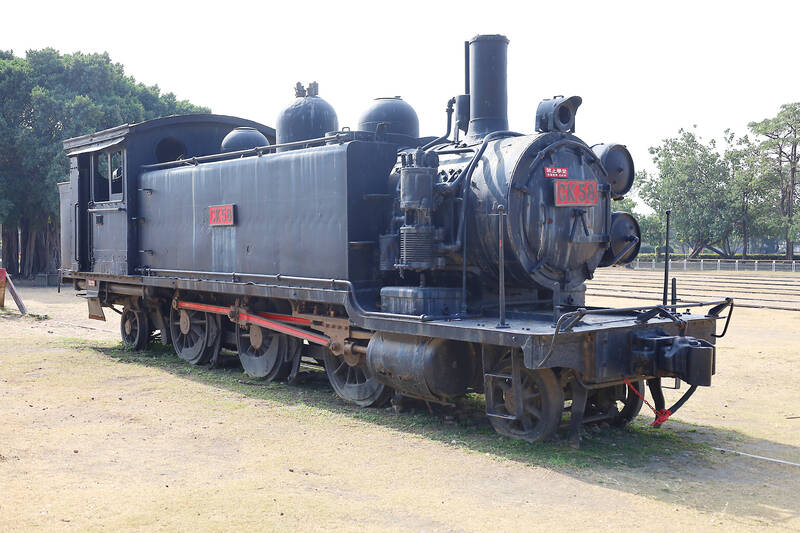
Photo: Thomas Bird, Taipei Times
Along the path that ascends to the hilltop consulate building, the story of Kaohsiung’s role as a cosmopolitan Qing-era treaty port is told via life-sized wax mannequin’s complimented by bilingual plaques. Underscored is Great Britain’s heavy addiction to tea that drew merchants East in search of the good leaf.
When Taiwan was opened to foreign trade after the Treaty of Tianjin (1858) and Convention of Peking (1860) were signed, India-born Brit Robert Swinhoe, who’d worked in Amoy (present-day Xiamen) and spoke Chinese, was appointed its first consul. Swinhoe is fondly remembered today as a naturalist who documented Taiwanese wildlife. He even got a local pheasant to be named after him and was also responsible for certifying that the pesky Formosan macaques that inhabit the hills around Kaohsiung Port — which I’ve been warned not to feed — are endemic to Taiwan.
Fortunately, I make it to the top unmolested by monkeys. Instead, the short hike is serenaded by birdsong, the like of which I imagine Swinhoe enjoyed over a century ago.
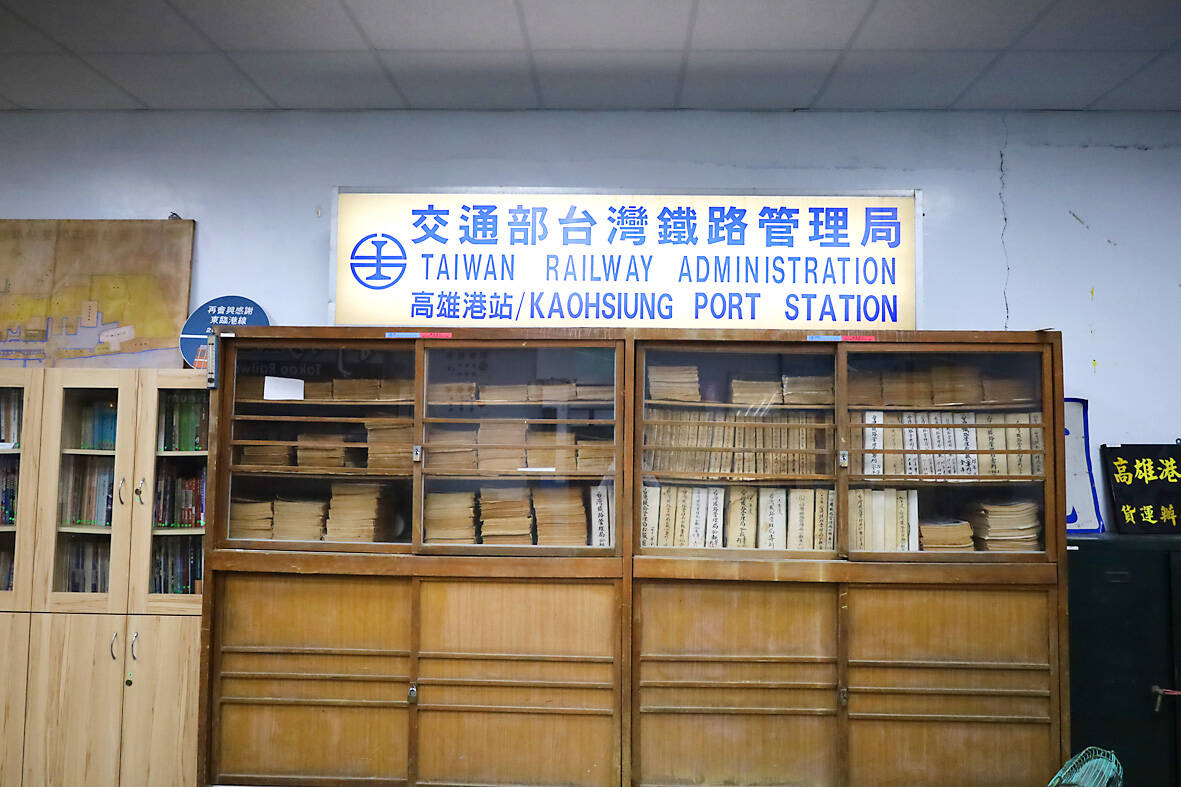
Photo: Thomas Bird, Taipei Times
The magnificent council building itself dates back to 1879. I usually find myself seeking outposts of British officialdom to renew a passport, but the British Consulate at Takow (britishconsulate.kcg.gov.tw) is, today, a small museum and English-style teahouse, which sells floral porcelain, royal paraphernalia as well as pots of Earl Grey to thirsty travelers.
However, the main sell-point has to be the soaring panorama of Kaohsiung Port, an uncorrupted vista that certainly accounts for why the British Consulate was repurposed as an ocean observatory during the Japanese colonial period (1895-1945).
Looking out at Taiwan’s largest harbor, history is condensed into one timeframe: The great fishing trawlers speak of the maritime culture that first attracted Fujianese fisherfolk across the strait; the distant gaudy towers recall twentieth century boom times when Kaohsiung was a productive, if polluted industrial town; while the Pier Two Art Centre reflects the southern city’s most resent transformation into a cultural hub, exemplified by the iconic Weiwuying National Centre For Arts over in Fengshan District (鳳山).
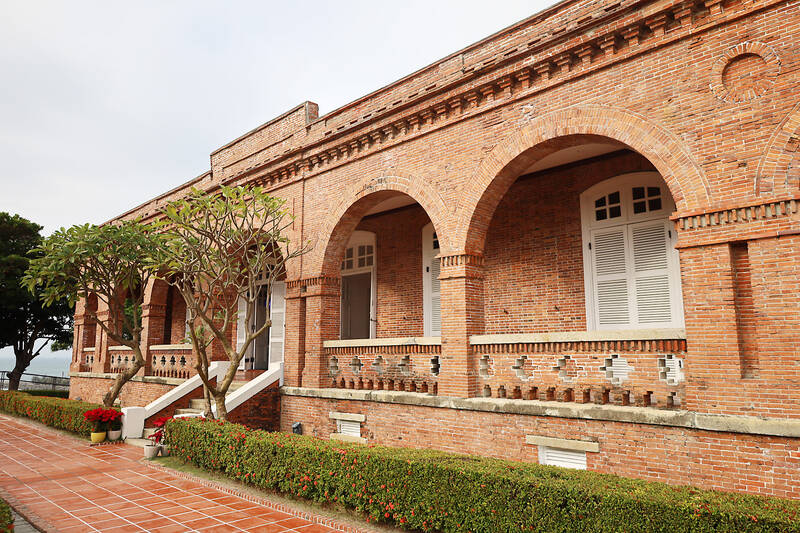
Photo: Thomas Bird, Taipei Times
TIME TRAVEL
At ground level, just a few blocks inland from the British Consulate, a public transport interchange between the metro and overground line is also a crossroads in time, although commuters emerging from Sizihwan MRT station (西子灣) and walking over to the Hamasen light rail station could be forgiven for overlooking the vintage stationhouse situated nearby.
Yet this was once a major railway terminus, Kaohsiung Port railway station, a place of arrival and departure at the very bottom of the north-south railway line. In fact, the name Hamasen is another name rich in meaning as it translates as “beach railway line” in Japanese. Today it is used to talk about the old historic quarter sandwiched between Shoushan (壽山) and the waterfront.
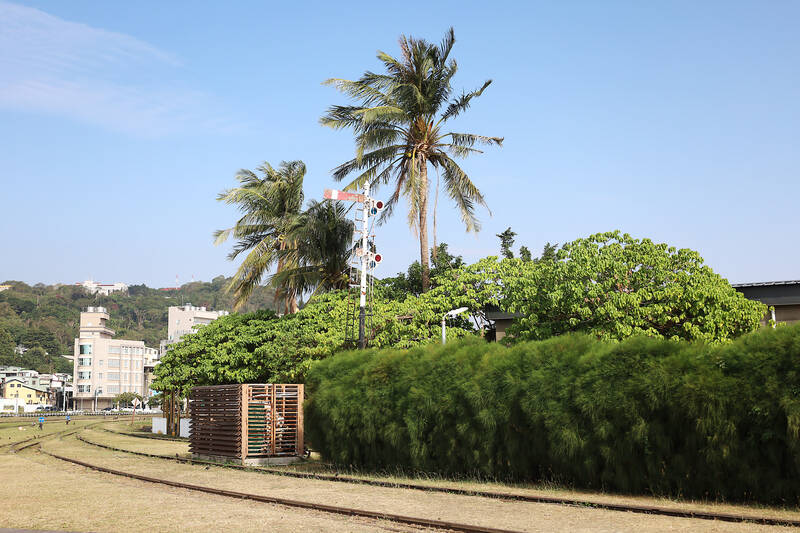
Photo: Thomas Bird, Taipei Times
While the port area’s prettiest building is of nineteenth century British provenance, Taiwan’s railways were largely laid in the twentieth century and are of Japanese design. The national trunk line was constructed at two ends and met in the middle at Tunnel Number 9 in central Taiwan in 1908. This defunct section of mountain railway has since been repurposed as the Hou-Feng bike path and is a popular tourist spot.
The old Kaohsiung Port railway station is located 200-kilometers south of the tunnel and has found new purpose as the Takao Railway Museum (舊打狗驛故事館, museums.moc.gov.tw), preserved for posterity by the transport heritage society.
There’s little to do inside the station house but shop for railway-themed knickknacks, admire the old offices or dress up as station master and take a selfie.
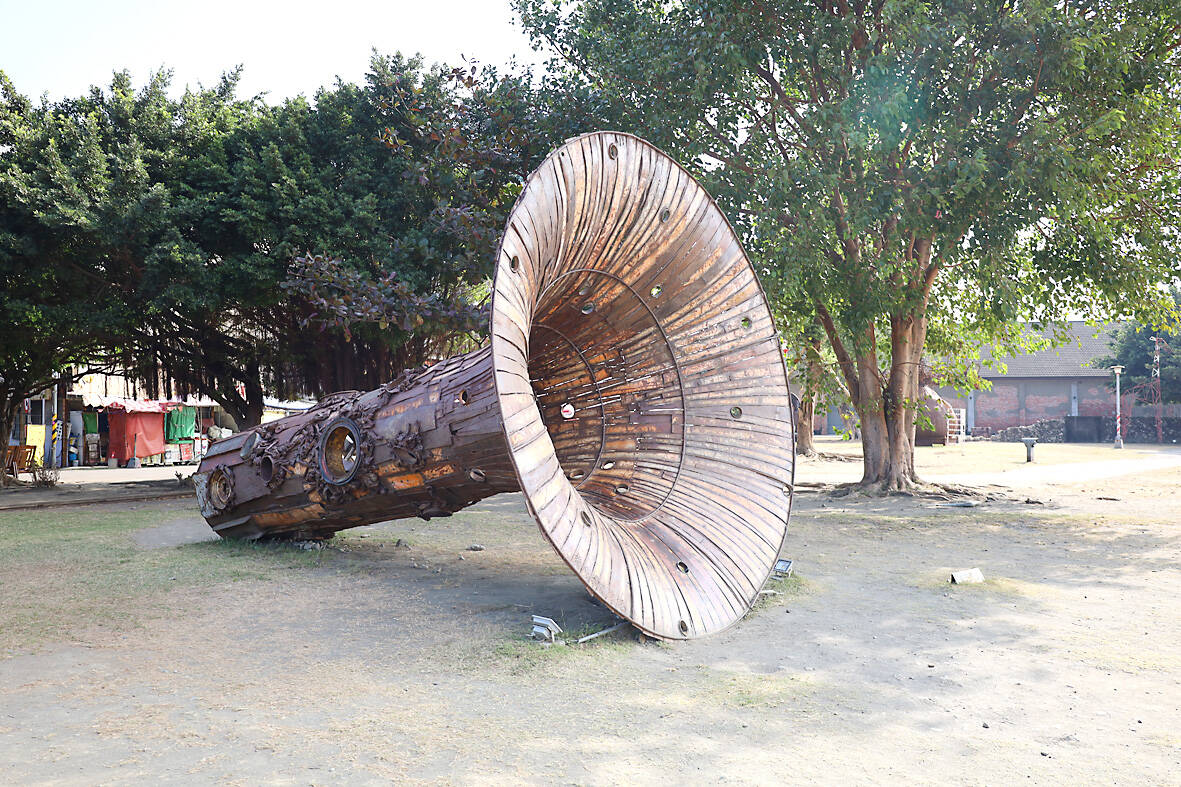
Photo: Thomas Bird, Taipei Times
Outside, however, just across the tracks, there’s a much larger outdoor exhibition for railway buffs — the Hamasen Railway Cultural Park, where steam locomotives, passenger cars and freight condoles have been strategically positioned beside the light rail line, in eyeshot of those commuting to and from the TRA Museum of Fine Arts.
ARTISTIC STREAK
The railway park is flanked by swaying palm trees giving it a lazy southern feel that recalls the sepia photos of Kaohsiung past.
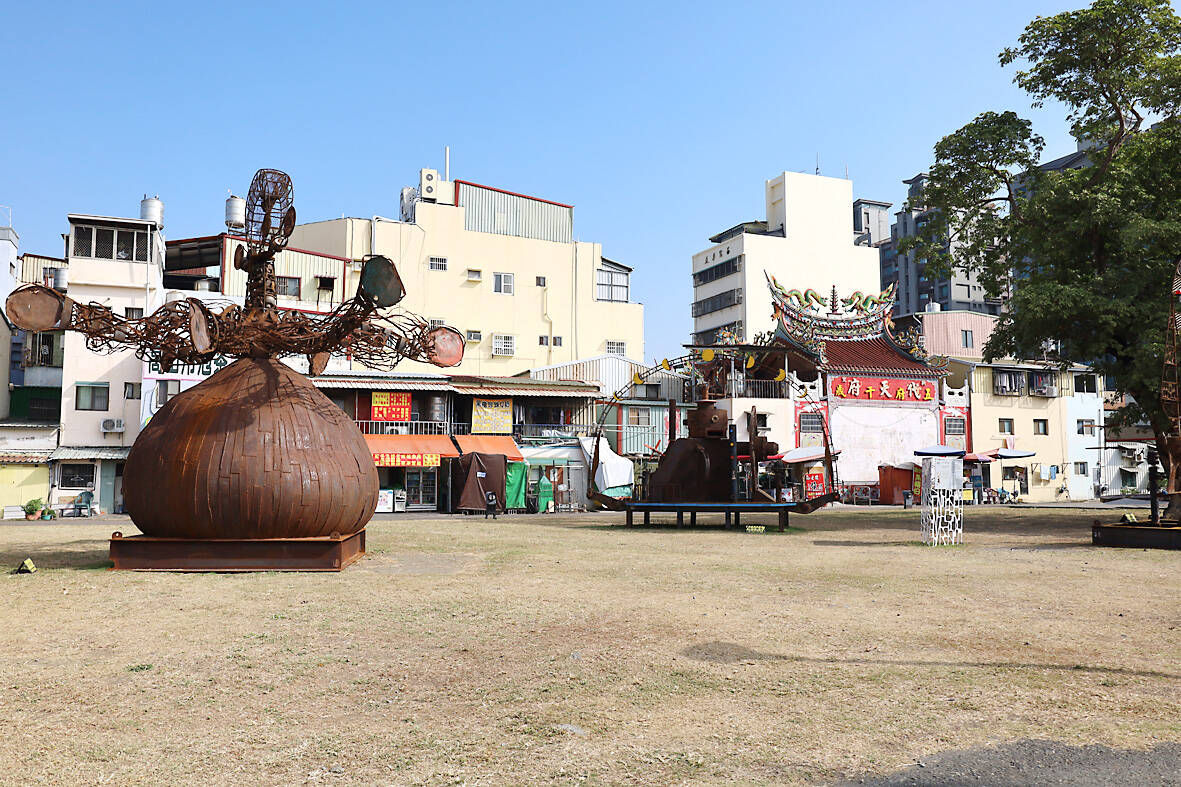
Photo: Thomas Bird, Taipei Times
Some conceptual, transport-themed sculptures made by local artists such as Chen Jun-hsian (陳俊憲) have been exhibited on the green.
Eventually, the Cultural Park meets a series of old warehouses lining the waterfront just to the west of the Love River estuary. This is the Pier Two Art Center, a hub for experimental theatre and visual arts.
Yet art and history are not segregated, I learn as housed in two of the warehouses is another exhibition celebrating the legacy of the iron road and its impact on Taiwan’s deep south.
The Hamasen Museum of Taiwan Railway (哈瑪星台灣鐵道館) appears modest from the outside, but within, the story of the national railway network and the evolution of Kaohsiung are woven together, explained via illustrated wall plaques, old photographs, colorful dioramas and the best model train I’ve ever seen.
“The Japanese established a harbor and railway stations in Hamasen 110 years ago,” reads one plaque. “They reclaimed the coast and paved the first ever streets in Kaohsiung. Since then Kaohsiung has transformed from fishing village to modern city…”
Despite the limitations of using an old warehouse as a museum, curators have made a skillful use of space to take visitors on journey from the fisheries, salt farming and sugar refining of Kaohsiung past through to the age of industry and the rise of the contemporary metropolis it fueled.
“Hamasen is more than just a term transliterated from Japanese. Rather, it represents a lifestyle and collective memory, and has become a historic icon.”
The message is clear: Kaohsiung’s rise from rural obscurity to lofty “second city” status began when the rails reached the sea.

That US assistance was a model for Taiwan’s spectacular development success was early recognized by policymakers and analysts. In a report to the US Congress for the fiscal year 1962, former President John F. Kennedy noted Taiwan’s “rapid economic growth,” was “producing a substantial net gain in living.” Kennedy had a stake in Taiwan’s achievements and the US’ official development assistance (ODA) in general: In September 1961, his entreaty to make the 1960s a “decade of development,” and an accompanying proposal for dedicated legislation to this end, had been formalized by congressional passage of the Foreign Assistance Act. Two

Despite the intense sunshine, we were hardly breaking a sweat as we cruised along the flat, dedicated bike lane, well protected from the heat by a canopy of trees. The electric assist on the bikes likely made a difference, too. Far removed from the bustle and noise of the Taichung traffic, we admired the serene rural scenery, making our way over rivers, alongside rice paddies and through pear orchards. Our route for the day covered two bike paths that connect in Fengyuan District (豐原) and are best done together. The Hou-Feng Bike Path (后豐鐵馬道) runs southward from Houli District (后里) while the

March 31 to April 6 On May 13, 1950, National Taiwan University Hospital otolaryngologist Su You-peng (蘇友鵬) was summoned to the director’s office. He thought someone had complained about him practicing the violin at night, but when he entered the room, he knew something was terribly wrong. He saw several burly men who appeared to be government secret agents, and three other resident doctors: internist Hsu Chiang (許強), dermatologist Hu Pao-chen (胡寶珍) and ophthalmologist Hu Hsin-lin (胡鑫麟). They were handcuffed, herded onto two jeeps and taken to the Secrecy Bureau (保密局) for questioning. Su was still in his doctor’s robes at

Mirror mirror on the wall, what’s the fairest Disney live-action remake of them all? Wait, mirror. Hold on a second. Maybe choosing from the likes of Alice in Wonderland (2010), Mulan (2020) and The Lion King (2019) isn’t such a good idea. Mirror, on second thought, what’s on Netflix? Even the most devoted fans would have to acknowledge that these have not been the most illustrious illustrations of Disney magic. At their best (Pete’s Dragon? Cinderella?) they breathe life into old classics that could use a little updating. At their worst, well, blue Will Smith. Given the rapacious rate of remakes in modern